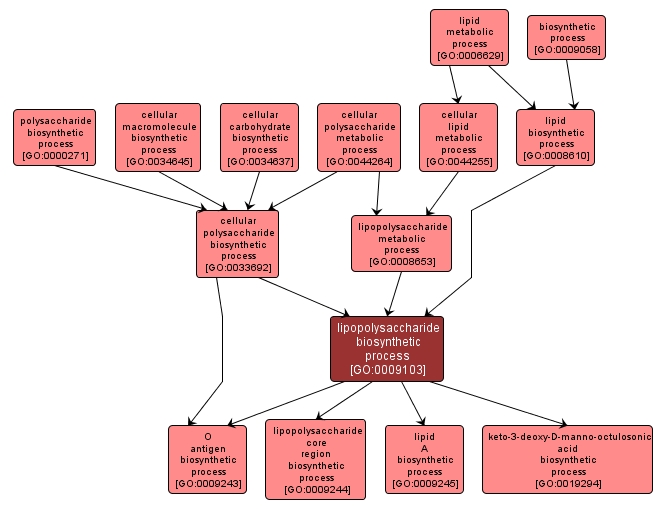GO TERM SUMMARY
|
| Name: |
lipopolysaccharide biosynthetic process |
| Acc: |
GO:0009103 |
| Aspect: |
Biological Process |
| Desc: |
The chemical reactions and pathways resulting in the formation of lipopolysaccharides, any of a group of related, structurally complex components of the outer membrane of Gram-negative bacteria. |
Synonyms:
- lipopolysaccharide biosynthesis
- LPS biosynthetic process
- lipopolysaccharide synthesis
- lipopolysaccharide anabolism
- lipopolysaccharide formation
|
|

|
INTERACTIVE GO GRAPH
|














